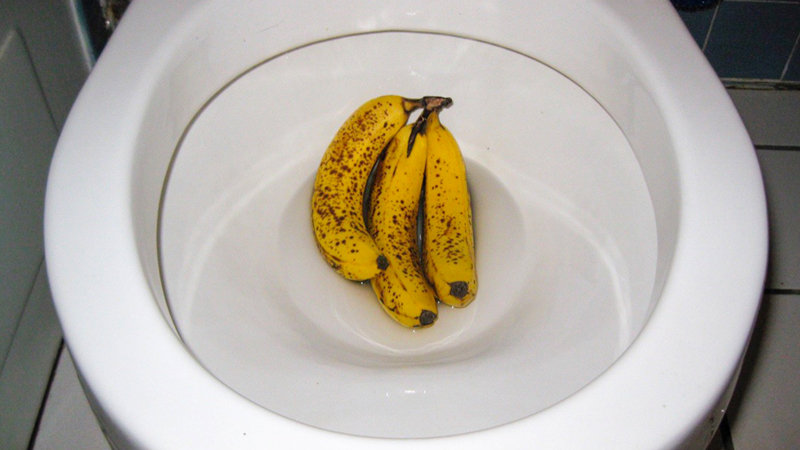Are You Able to Dispose of Food Waste in the Toilet?
Are You Able to Dispose of Food Waste in the Toilet?
Blog Article
We have encountered the article involving Flushing Food Down the Toilet? listed below on the net and felt it made good sense to write about it with you over here.

Intro
Many people are commonly confronted with the dilemma of what to do with food waste, particularly when it concerns leftovers or scraps. One common question that occurs is whether it's okay to flush food down the bathroom. In this post, we'll look into the reasons that individuals could consider flushing food, the repercussions of doing so, and alternative approaches for correct disposal.
Reasons individuals may consider flushing food
Lack of recognition
Some people might not know the potential damage triggered by flushing food down the toilet. They might mistakenly think that it's a safe technique.
Ease
Purging food down the commode might seem like a quick and very easy option to dealing with unwanted scraps, especially when there's no nearby trash can offered.
Idleness
In some cases, individuals may just pick to flush food out of large idleness, without thinking about the repercussions of their actions.
Repercussions of flushing food down the commode
Environmental influence
Food waste that ends up in waterways can contribute to contamination and damage marine ecosystems. Additionally, the water used to purge food can stress water resources.
Plumbing concerns
Flushing food can result in clogged pipelines and drains pipes, triggering pricey pipes repair services and hassles.
Types of food that should not be purged
Fibrous foods
Foods with coarse appearances such as celery or corn husks can get tangled in pipelines and create clogs.
Starchy foods
Starchy foods like pasta and rice can take in water and swell, bring about clogs in pipes.
Oils and fats
Greasy foods like bacon or food preparation oils need to never be purged down the toilet as they can strengthen and create blockages.
Appropriate disposal approaches for food waste
Making use of a waste disposal unit
For homes outfitted with waste disposal unit, food scraps can be ground up and flushed via the pipes system. Nonetheless, not all foods are suitable for disposal in this fashion.
Recycling
Particular food product packaging materials can be recycled, decreasing waste and reducing ecological effect.
Composting
Composting is an eco-friendly way to get rid of food waste. Organic products can be composted and used to improve soil for horticulture.
The value of correct waste management
Decreasing environmental damage
Proper waste administration practices, such as composting and recycling, aid lessen air pollution and preserve natural resources for future generations.
Safeguarding plumbing systems
By avoiding the method of flushing food down the toilet, homeowners can prevent expensive plumbing repairs and preserve the integrity of their pipes systems.
Final thought
Finally, while it might be tempting to purge food down the commode for convenience, it is necessary to comprehend the possible effects of this action. By taking on correct waste monitoring methods and getting rid of food waste responsibly, people can add to much healthier plumbing systems and a cleaner setting for all.
FLUSH FOOD DOWN THE TOILET?
FLUSHING FOOD CAN CAUSE BLOCKED DRAINS IN YOUR HOME
All of the plumbing fixtures in your home are connected to the same sewer pipe outside of your home. This outdoor sewer pipe is responsible for transporting all the wastewater from your home to the Council sewer mains. Even small pieces of food that go down the kitchen sink can cause problems for your sewer. It should therefore be obvious that flushing larger bits of food, such as meat, risks a clog in either the toilet itself or the sewer pipes. Flushing greasy food is even more problematic because oil coagulates when it cools, coating the interior lining of your pipes.
THE TOILET IS NOT A BIN
Food isn’t the only thing that people shouldn’t be flushing down the toilet. People use the toilet to dispose of all kinds of things such as tampons, makeup wipes, dental floss, kitty litter and even underwear. Water goes to great lengths to educate residents about the high costs and stress placed on wastewater treatment systems simply from people flushing the wrong stuff down the toilet. It costs taxpayers millions of dollars each year, and homeowners thousands in blocked drain repairs.
FLUSHING FOOD IS A WASTE OF WATER
Flushing food is a waste of our most precious resource - water. In June this year Level 1 water restrictions were introduced to protect water supply from drought conditions. Much of New South Wales continues to be affected by prolonged drought with recent figures revealing up to 97 per cent of the state remains in drought. Depending on whether you have a single or dual flush toilet, every single flush uses between five and 11 litres of water. In the current climate this is a huge amount of water to be wasting on flushing food that should be placed in the bin (or better yet, the compost).
https://www.jabplumbingsolutions.com.au/blog/can-you-flush-food-down-the-toilet

As a person who reads on What Can Happen If You Flush Food Down the Toilet?, I figured sharing that topic was important. Enjoyed our write-up? Please share it. Let somebody else discover it. Thanks a bunch for being here. Revisit us soon.
Need Help? Hire Us Now! Report this page